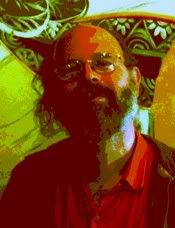
Yes
I have purchased a ticket on Air Asia from Phnom Penh, Cambodia to Bangkok for $10.00 Ten.
But Taxes are another $19.50!
And Airport Departure Tax is $25.00!
I think I still have good deal. What do you think??
Read about my published work, my ideas about music and other interests. Links to Literary Resources.
Elusive friends in
Many Capitols Unearthed
Koto in Maryot
Distortion reigns on
friendship in a foreign land
The ethernet's quiet
softly silent mind
A cold winds murmurs, afraid
Lost Samurai
My Koto's tunes jar
strings untaut rust patina
missing friend; come back
A Written poem
An Invisible Inkdrop
An Eternal clasp
Children in a bed
Here I breathe strange lonely air
A good friend comforts
Of Vicissitudes
Many aborted meetings
a cold barren heart
Silently arrive
metal wings across cities
Breakfast is burnt toast
Accusations hurt
many contrite shrinking hearts
White House is quiet
sorry, snarling friend
scared Japanese; a koto
dry autumn in spring
Raging Potomac
Apologies for trouble
The Art of Living

There is no culture that has not developed music in some form. The general stress on harmony in Western classical music, where multiple notes might play together for a pleasing effect, is not pronounced in Indian classical music, which is more preoccupied with the importance of single notes within a larger sequential context. Japanese gagaku, Korean hyangak or traditional Icelandic music might sound strange to those accustomed to something else but it works for those who live in those countries nevertheless. Each culture needs to produce music for whatever reason.
Various parts of the brain apparently work together in the understanding of melody, harmony and rhythm. Classical music in particular stimulates those parts of the brain that deal with mathematics and spatial reasoning. Those who are musical seem to have an intuitive grasp of mathematics (though - empirically - the converse need not be true) because of the need to process variations in pitch and time.
But science apart, music's peculiar agony is that it thrills and troubles us. Why do we like music? Why are some better at it than others? Why does it drive us mad, motivate us, or cheer us up?
The desperate need for man to want to believe he is not alone in this Universe and has some kind of a benevolent figure or figures watching over him, picking and choosing acts of good and evil, punishing and rewarding and generally keeping an idealistic sense of order has developed the institution of religion.
The effect of music has long been interpreted as a means of communicating with the unseen and unknown. It is no wonder that classical music everywhere has strong roots in the devotional or meditative side of existence - and not always in a positive way.
Music (and even dance) causes a peculiar ecstasy or disconnect with the immediate world and is interpreted as a spiritual flight of fantasy. Whether Gregorian chants or bhajans, Dhrupad or the recitation of shlokas, Buddhist chants or Turkish Sufi music -- the cadence of religious music acts as a pleasing soporific and a temporary escape into a personal mental space that is satisfying because we are trained to believe we are close to the supernatural at that time. The Voodoo ceremonies of the Caribbean, as another example, consider music and dance as an expression of a connection to the spirit world.
The violin was considered an instrument of the Devil and blamed for all manner of abnormal behaviour. Nero continues to be falsely accused of having fiddled while Rome was burning - implying perhaps that he was so absorbed in playing the violin (which hadn't even been invente then, by the way) that he was impervious to everything else around him.
Used as an accompaniment to dance in Europe, the violin was condemned as being a catalyst to bad morals and an agent of the Devil.
Giuseppe Tartini (1692-1770), then the violin's greatest virtuoso, is credited with the Devil's Trill or Devil's Sonata. He claimed that the Devil played it for him in a dream.
I heard a sonata so unusual and so beautiful performed with such mastery and intelligence, on a level I had never before conceived was possible! I was so overcome that I stopped breathing and awoke gasping. Immediately I seized my violin, hoping to recall some shred of what I had just heard - but in vain. The piece I then composed is without doubt my best, the Devil's Sonata, but it falls so far short of the one that stunned me that I would have smashed my violin and given up music forever if I could but possess it.
The Devil's Sonata is indeed quite bizarre and does seem supernatural. Tartini's other work does not resemble this piece at all! One speculates ... when normal dreams are so strange and so quickly forgotten, is it impossible that one hears music in them?
Niccolo Paganini (1782-1840) was another brilliant violinist who was under suspicion because his virtuosity was just a bit too unbelievable. He handled the violin like a toy and could do things with it that no one else could even dream of. The German poet Boerne, after hearing a concert by Paganini, said: 'It was (a) heavenly and diabolical enthusiasm'.
Many believed he was the Devil himself and it did not help that he had dark hair and a pale face. Mme Blavatsky's chilling story, The Ensouled Violin, talks about a violin teacher's determination to have his student get the better of Paganini ('It was rumoured that the strings of his violin were made of human intestines, according to all the rules and requirements of the Black Art') in a duel. He sacrifices his life and forces his student to use his guts as the violin strings.
The story ends with the wraith of the violin teacher rising from the student's violin (His viscera were protruding and the ends of the intestines stretched on the violin). For his pains, Paganini was not allowed a religious burial when he died. His music was not Godly enough - it was too devilish.
Warning: I am not a musicologist. I am just interested in music. Do not quote me or act based on the information available on this page. You can collect and collate information in the same way as I have. These are from public sources such as sarangi.info, itcsra.org, musicindiaonline.com and others. This is only an indicative article and I do not claim its correctness or its completeness. I don't want credit for anything. Thank you.

The Raagas of the Todi Thaat (Root) are regarded with much apprehension. Extremely hard to handle by most musicians, especially instrumentalists, it is also not the easiest to fully unravel by the listener. One practical reason is, of course, that the Raagas that owe their existence to this Thaat are all executed in the morning when most concerts are not scheduled anyway. Thus the rarity.
As a result, names like Khamaj, Bageshree and Bihag etc. are far more familiar as they appear in the evening/night when people are possibly more disposed to relax and listen.
Highly cerebral and intellectual Raagas like Todi do deserve much more than a cursory glance. Two quick appetisers - here and here.
Todi is highly reflective and meditative. We visulize a merging with a greater consciousness, an endless time, fleeting and evanescent life-blips. I am aware of one musician who was sucked in so badly by this Raaga that he possibly went mad. The shades and depths of this Raaga are not for the timid.
They emphasize, in my mind, a stern and uncompromising internal focus on something elusive but clearly present. In short, the soul.
The Todi for Hindustani Classical corresponds to Hanuma Todi of the Carnatic school, whose Todi is different. I digress.
This figure explains the strange undulations of Todi in the ascent and descent. The symmetry is broken by the unexpected and delicately introduced Pancham. An analogy might be the Teevra Madhyam of Yaman which is conspicuous by its sparing use. The determined non-usage of Pancham results in Gujari Todi, which also has a different lilt. But it is not as easy as that. If it were, the mere removal or addition of notes ought to result in millions of new Raagas. This is not true; some combinations are indeed considered 'unmusical'. The manner of exposition is also important. A fast Bilaskhani Todi will sound jarring without a proper buildup or a slow Brindavani Sarang is meaningless. Or a Nand without adequate interspersing of silence violates its essence, though it may sound okay.
Another simply classic example: the Sarangi of Munir Khan.
Here you have Faiyaz Khan singing Todi.
A much longer version by Parveen Sultana is available here. If you listen carefully, you will find a few errors, which merely shows how difficult this Raaga is, and not necessarily the caliber of the artiste. These things happen.
Bilaskhani Todi is a misnomer, though understandably so. It technically belongs to the Bhairavi Thaat. It's pathos must be remarked upon. The story is that as Bilaskhan, the son of Tansen, created this Raaga at the funeral of his father. You are unlikely to find a more brilliant example than that of the late Pandit Nikhil Bannerjee's Raga Records production example (no audio here, sorry).
Here is a beautiful example, otherwise, by his student Kushal Das.
What marks the special searing pathos of Bilaskhani Todi? First is the missing Madhyam on the ascendent, and the pair of Gandhar and Pancham. Further, while ascendng, if Madhyam is touched, a descent is forced. And then the quadra-set of Dhaivat, Nishad, Nishad and Madhyam. Odd? Hmmmm... that is the soul-disturbing pain of Bilaskhani Todi, an extremely moving
Raaga. Here is Amir Khan.
From an unknown manuscript, unlikely to ever see the light of day, Bilaskhani Todi speaks as the flames in a pyre:
As we lick this pyre singing Komal Rishabh, we wonder at our task. As we creep over his body, we peep at his face and reach for the Pancham in exclamation, astonished at his nobility. Yes, he knew us, your Father, and now we know him.
Bahaduri Todi Mallikarjun Mansur uses both Rishabs with gravity and care. You will also find both Madhyams, the lower an accent from Bilaskhani Todi. Not for the faint hearted.
And Gujari Todi
Here you have a lovely piece in Todi by Abdul Latif Khan. Worth many listens.
Asa Todi, or just Asa, is a rarity mostly found in Sikh Shabads. I found a nice one by Bhimsen Joshi. It is a blend of Asavari and Todi.
Two relatively popular Raagas that derive fom Todi are Madhuvanti and Multani. Multani is restless, while Madhuvanti is sweet. Multani shares the notes of the base Todi, while Madhuvanti deviates in the use of Rishab. One may argue it does not belong to the Todi Thaat
Here is a Sarangi piece by Nathu Khan in Multani
And here is Inayat Shah on the Dilruba playing Madhuvanti
We end with this Todi and here are Ustad Bismillah Khan and the late Pandit V G Jog (who explained Todi to me and a young Dutch violinist so many years ago in a small room in Kolkata, which we then played together somewhere and made a mess of.)
Enrich your lives and those of the next generation now! Listen to Indian classical music!
Cordially and Goodbye.
VM